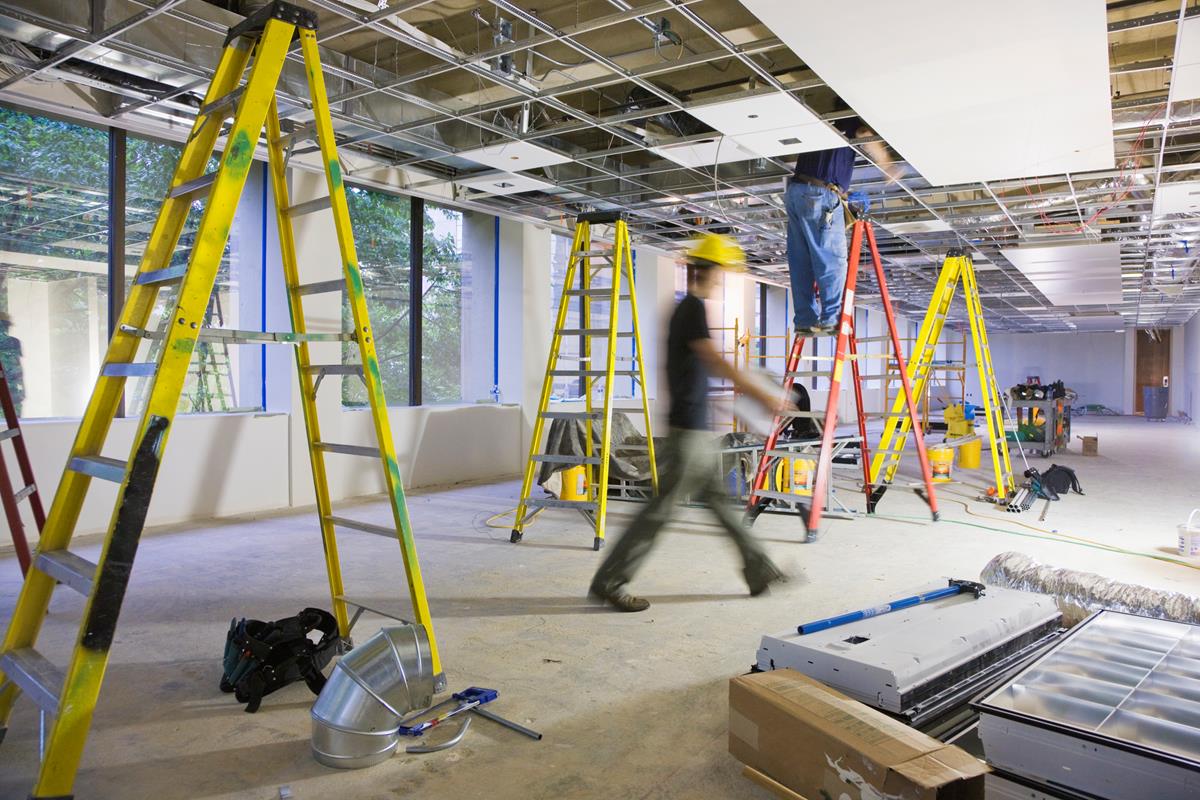The Slow Erosion of Labor Law § 240(1) Ladder Cases: NY Court of Appeals’ Focus on Sole Proximate Cause

New York, N.Y. (July 18, 2022) - On April 28, 2022, the New York Court of Appeals issued three significant decisions that chip away at the formerly impenetrable ladder cases that arise under New York Labor Law § 240(1). Less than a week later, Lewis Brisbois, relying on one of these decisions, successfully defeated a plaintiff’s motion for summary judgment on a Labor Law § 240(1) claim in Bronx County. While all three cases involved a plaintiff falling off a ladder, the impact of the Court of Appeals’ language in its decisions suggests that New York courts should use a broader analysis when assessing whether an actual Labor Law violation has occurred, and consider whether the plaintiff was the sole proximate cause of the accident based on safety checks the plaintiff could have performed. Further, courts must remember that merely because a plaintiff fell at a worksite, that fall does not automatically mean that a violation of Labor Law 240(1) has occurred.
Cutaia v. The Board of Managers of the 160/170 Varick Street Condominium
In the first case, Cutaia v. The Board of Managers of the 160/170 Varick Street Condominium, 2022 N.Y. LEXIS 877, 2022 N.Y. Slip Op. 02834 (2022), the New York Court of Appeals reversed an order from the state’s Appellate Division, First Department, which had granted the plaintiff’s motion for partial summary judgment on his Labor Law § 240(1) claim. The plaintiff had been working on a building renovation project, which required him to cut and reroute pipes in the ceiling that were located near electrical wiring. The plaintiff used an A-frame ladder, which he had to lean against the wall in the closed and unlocked position due to space limitations. While the plaintiff was standing on the ladder, he received an electric shock and fell to the ground.
In reversing the Appellate Division’s grant of summary judgment for the plaintiff, the Court of Appeals began its decision by issuing two reminders. First, that “[a]n ‘accident alone’ is insufficient to establish a violation of Labor Law §240(1) or causation,” and second, that the purpose of Labor Law § 240 is to protect against the harm directly flowing from the force of gravity. Significantly, despite the fact that the plaintiff in Cutaia fell from a ladder, the Court of Appeals looked past that fall and went a step further in its analysis, noting that questions of fact existed as to whether the ladder itself failed to provide proper protection against the accident that occurred, whether the plaintiff should have been provided with additional safety devices, and whether the ladder’s purported inadequacy or the absence of additional safety devices was a proximate cause of the plaintiff’s accident.
The court’s reasoning in Cutaia can be used in future cases in all New York jurisdictions in New York and is especially helpful in cases originating in the Bronx, where it has been an uphill battle for defense counsel to defeat a plaintiff’s Labor Law § 240(1) claim.
Bonczar v. American Multi-Cinema, Inc.
In the second case, Bonczar v. American Multi-Cinema, Inc., 2022 N.Y. LEXIS 876, 2022 N.Y. Slip Op. 02835 (2022), the New York Court of Appeals affirmed the judgment of the Appellate Division, Fourth Department, which had affirmed a jury verdict holding that a defendant did not violate Labor Law § 240(1). The plaintiff in Bonczar was injured when he fell from a ladder while retrofitting a fire alarm system at a movie theater. After climbing up and down to the third or fourth step of the ladder several times without issue, the plaintiff began to descend a final time when the ladder purportedly shifted, causing plaintiff to fall.
The plaintiff initially moved for partial summary judgment on his Labor Law § 240(1) claim and the New York Supreme Court granted his motion. The Fourth Department reversed and sent the case back to trial, holding that a factual issue existed as to whether a statutory violation of New York’s Labor Law had occurred and whether the plaintiff’s own acts and omissions, particularly as to the ladder’s positioning and his failure to check the ladder’s locking mechanisms, were the sole proximate cause of his own accident. On remand, the plaintiff’s Labor Law § 240(1) claim was tried before a jury, and the jury returned a defense verdict, finding no violation of the statute and that the plaintiff’s failure to position the ladder properly was the sole proximate cause of his injuries.
While the Court of Appeals could not review the summary judgment decision because the question of proximate cause and liability was left undecided, New York’s highest court noted that the Appellate Division’s order regarding the reversal of summary judgment “did not remove any issues from the case,” meaning that “the question of proximate cause and liability” were issues that could have been – and were – litigated before the jury. Thus, upon affirming the Appellate Division order that affirmed the jury verdict, the Court of Appeals implicitly approved the Appellate Division’s summary judgment decision.
This decision may be used in opposing post-trial appeals where the plaintiff seeks to disturb a favorable verdict on this issue. The “sole proximate cause” defense is routinely used to defend § 240(1) ladder cases, particularly where the plaintiff positions the ladder on uneven ground or fails to ensure it is locked and secure prior to ascending.
Healy v. EST Downtown, LLC
In the final case, Healy v. EST Downtown, LLC, 2022 N.Y. LEXIS 875, 2022 N.Y. Slip Op. 02836 (2022), the New York Court of Appeals reversed a decision from the Appellate Division, Fourth Department and denied the plaintiff’s motion for partial summary judgment on his Labor Law § 240(1) claim. Instead, the Court of Appeals granted the defendant’s motion for summary judgment, dismissing the plaintiff’s Labor Law § 240(1) claim.
In this matter, the plaintiff was employed as a maintenance and repair technician and his regular duties included making the building’s rental properties ready for incoming tenants by painting and repairing fixtures. On the day of the accident, the plaintiff was responding to a pest control work order filed by one of the building’s commercial tenants when he fell from an unsecured eight-foot ladder that moved while he was attempting to remove a bird’s nest as the bird suddenly flew out of the nest.
The Court of Appeals held that the plaintiff’s work did not fall within the ambit of Labor Law § 240(1). New York’s highest court held that the plaintiff’s work was “routine” within the meaning of the first factor out of the four-factor test to determine whether an activity is “cleaning” within the meaning of the statute. The first factor considers whether the work is “routine, in the sense that it is the type of job that occurs on a daily, weekly or other relatively-frequent and reoccurring basis as part of the ordinary maintenance and care of commercial premises.”
This case is a good reminder that Labor Law § 240(1) cases involving ladders may be defeated where the work being performed does not fall within the ambit of the Labor Law. Cases involving cleaning or pest control may often fall outside of the scope of the statute, but the application of these exceptions to labor law cases can be nuanced.
Practical Applications
Approximately one week after this trio of decisions was handed down, Lewis Brisbois’ New York attorneys successfully used these rulings to defeat a plaintiff’s motion for summary judgment on his Labor Law § 240(1) claim, with the New York Supreme Court, Bronx County relying on the Court of Appeals’ decisions in both Cutaia and Bonczar.
In the matter, captioned Melendez v. 1595 Broadway, LLC, the plaintiff had been using an aluminum ladder and, as he descended, the ladder slid and the plaintiff fell. The court held that there were triable issues of fact as to whether the plaintiff’s own facts and omissions – particularly his failure to check the ladder’s locking mechanisms and whether the ladder was properly tied off – were the sole proximate cause of the accident. The court’s citation to Cutaia and Bonczar in their decision signals a favorable change for defendants on Labor Law § 240(1) and ladder cases.
Going forward, when applicable, Lewis Brisbois’ New York attorneys intend to rely on these three decisions in defending Labor Law claims brought against insureds. Given the broad language of the decisions and the admonitions therein that a fall at a construction site is not always tantamount to a violation of the Labor Law, and given the implicit sanction by the New York Court of Appeals to put an onus on the plaintiff to ensure the safety devices provided to are used properly, we expect that these recent Labor Law decisions will not only help stem the tide of routine grants of summary judgment in favor of plaintiffs, but can also be used as a sword in securing summary judgment on behalf of the insured.
For more information on these decisions and how Lewis Brisbois can assist in defending against Labor Law § 240(1) and ladder cases, contact the authors of this alert. Visit our New York Labor Law Practice page for additional alerts in this area.
Authors:
Kristen Carroll, Partner
Ellen H. Greiper, Partner
Gregory S. Katz, Managing Partner - New York, NY
James M. Strauss, Partner

